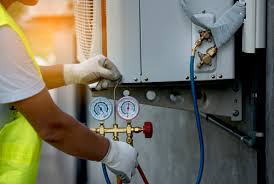
Furnace installation requires the use of various tools, including electrical, sheet metal, and woodworking tools. Proper alignment of the main unit is vital for proper airflow. The furnace needs space around it to avoid clogging and rusting. The installer will also need to make sure that the furnace is level. This can be accomplished by cutting holes in the right places and utilizing appropriate pipe fittings.Have a look at Vernon Plumber-Vernon Air Conditioning, Plumbing & Electrical Services for more info on this.
Before starting the installation process, consult the manufacturer’s manual to determine how to safely install the furnace. The unit should be placed on a level surface with a slight slope towards the condensate drain. It is important to connect the unit to the home’s ducting system and make sure that there are no leaks. It is also important to verify the wiring according to the furnace’s manual and be cautious of polarity.
Before hiring a professional to install a new furnace, ask for a comprehensive estimate. The quote should include all equipment manufacturers, model numbers, and completion dates. Ask about the calculations used to size the new gas furnace, as undersizing or oversizing a unit could result in expensive problems. Make sure the installer is using name-brand equipment. Cheap knock-offs may be inefficient and lead to a faulty installation.
The size of your house is another important factor to consider when choosing a new furnace. This will affect the size of the unit and the length of the installation. Large houses require larger furnaces with higher volume capacities. The wrong size furnace will cause the furnace to work overtime and wear out its components sooner than expected.
You must hire a licensed heating contractor to install your new furnace. This way, you can rest assured that the installation will be done professionally. Inexperienced technicians may not know the proper equipment and tools needed for furnace installation. Besides, they may not be able to meet all the requirements for safe installation.
The furnace system uses a blower assembly that draws air in and distributes warm, conditioned air throughout the house. The furnace also uses a return vent, which is a large, flat vent located in a wall, ceiling, or floor. This is where fresh air from outside the house enters the furnace system.
A new furnace installation will begin with an analysis of the air distribution system. The ductwork will be visually checked for sizing. Ductwork that is too small or too large will not deliver air efficiently, degrading the furnace’s performance. Once the air ducts are properly sized, the furnace will run smoothly for years.
A professional installer will carefully plan the installation process and make sure all parts are in place. A professional installer will also make sure that the ducts are in good condition and will be safe to use. The installer will test your heating system before and after installation and make any necessary adjustments. They will also explain the proper care for your new furnace.